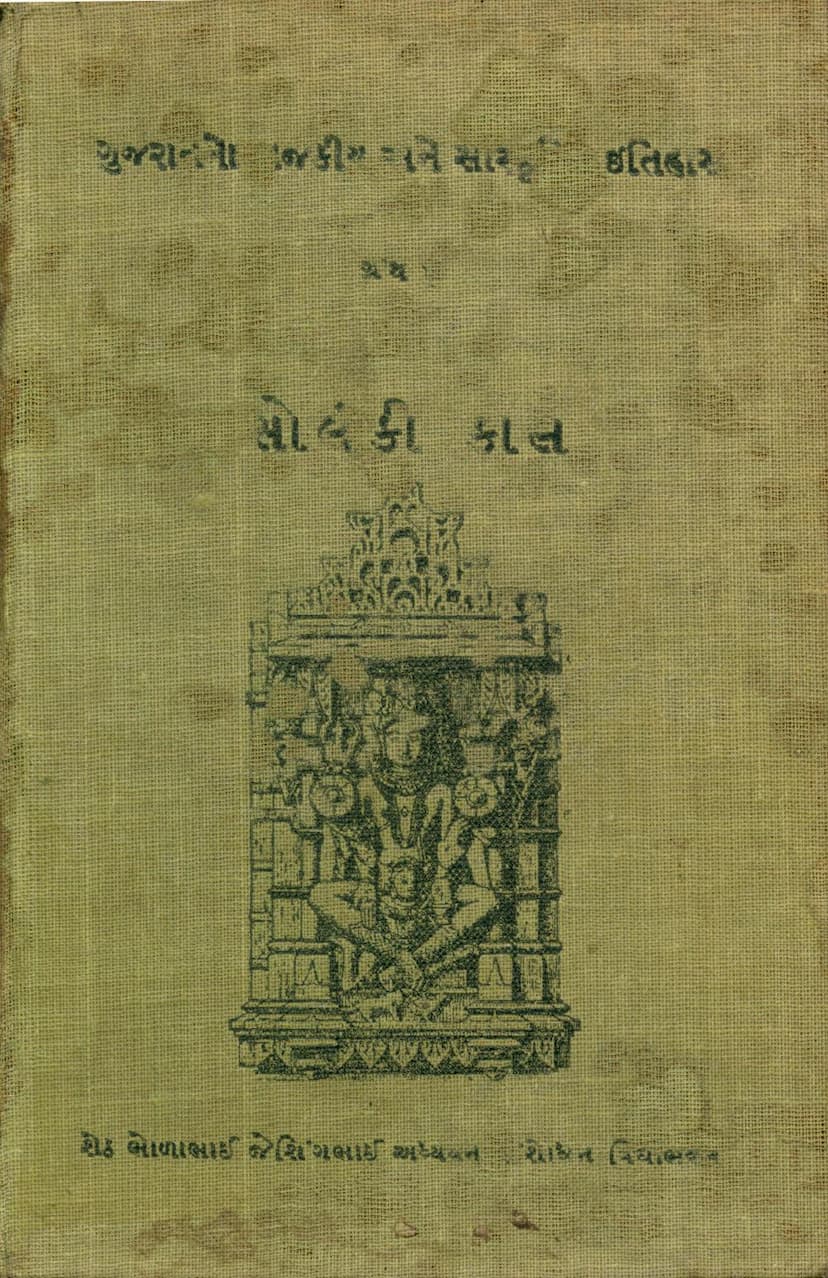Gujaratno Rajkiya Ane Sanskritik Itihas Part 04 Solanki Kal
Added to library: September 1, 2025

Summary
The provided text is the fourth volume, titled "Solanki Kal," of the "Gujaratno Rajkiya ane Sanskritik Itihas" (Political and Cultural History of Gujarat) series, authored by Rasiklal C. Parikh and Hariprasad G. Shastri, and published by B. J. Adhyayan Sanshodhan Vidyabhavan.
This comprehensive work delves into the political and cultural history of Gujarat during the Solanki era, often referred to as the "Golden Age" of Gujarat. The book is structured into three main parts: Political History, Cultural History, and Archaeology.
Part 1: Political History This section covers the rise and fall of the Solanki dynasty and its successors, the Vaghela rulers.
- Chapter 1: Introduces Anhilpatak Pattanam (Anhilvad Patan), the renowned capital of Gujarat, discussing its establishment, etymology, and description.
- Chapters 2-5: Detail the political history of the Solanki kingdom, tracing its origins, rise, period of glory under rulers like Siddharaj Jaysinh and Kumarpal, and its eventual decline. The Vaghela-Solanki kingdom is discussed in Chapter 6, with an appendix addressing issues related to Karnadev Vaghela and his family.
- Chapter 7: Focuses on prominent families and officials during the Solanki period, highlighting their lineage and contributions.
- Chapter 8: Outlines the history of the 17 major and minor contemporary states within Gujarat, Saurashtra, and Kutch, as well as approximately ten contemporary dynasties around Gujarat, providing a broader political landscape.
- Chapter 9: Analyzes the state administration, including the divisions (mandals) within the Solanki kingdom, the structure of government departments, and the nature of official documents.
Part 2: Cultural History This part explores the rich cultural tapestry of the Solanki era.
- Chapter 10: Discusses the social conditions, including details about various castes, the practice of widow remarriage and divorce, moral standards, the existence of courtesans, slavery, social ostracism, and material culture.
- Chapter 11: Examines the economic conditions, covering agriculture, industry, crafts, trade, and the importance of ports like Bharuch and Cambay.
- Chapter 12: Delves into the language and literature of the period, highlighting the evolution of the Gujarati language from Apabhramsha and the significant contributions of Jain scholars like Hemchandracharya.
- Chapter 13: Focuses on the script prevalent during the Solanki era, noting the development and characteristics of the Nagari script, including specific features found in Jain manuscripts.
- Chapter 14: Explores the religious landscape, discussing the prominence of Shaivism and Jainism, the continuation of Surya worship, and the presence of Gujarati and Islamic followers in Gujarat. It also touches upon the Pasupata Acharyas and the spread of Surya worship in India and Gujarat.
Part 3: Archaeology This section covers the material evidence from the Solanki period.
- Chapter 15: Discusses information derived from archaeological excavations and site surveys, comparing the Solanki period findings with those from the Kshatraps and Mitrak eras, and highlighting the potential for further discoveries at sites like Anahilwad.
- Chapter 16: Details architectural monuments, including civic architecture (cities, forts) and religious structures (temples), water reservoirs, and the development of temple architecture. It notes the presence of temples, forts, and water reservoirs from this period.
- Chapter 17: Focuses on sculptures from the Solanki period, covering Hindu and Jain sculptures.
- Chapter 18: Examines the art of painting, specifically mentioning miniature paintings found in manuscripts and the characteristics of Gujarati painting during this era.
- Appendices: The book includes appendices containing traditional accounts from Puranas and Prabandhas, genealogies of Gujarat and surrounding dynasties, a general and chapter-specific bibliography, a glossary of technical terms, and a list of special names. Maps, line drawings, and photographs are also provided to illustrate the content.
The preface emphasizes the multi-volume plan for the political and cultural history of Gujarat and highlights the collaborative effort of experts in preparing each chapter. The publication received significant support from the state government, and the editors express gratitude to the contributing scholars and collaborators. The book aims to be a useful resource for all students of Gujarat's history, particularly focusing on the vibrant Solanki period.